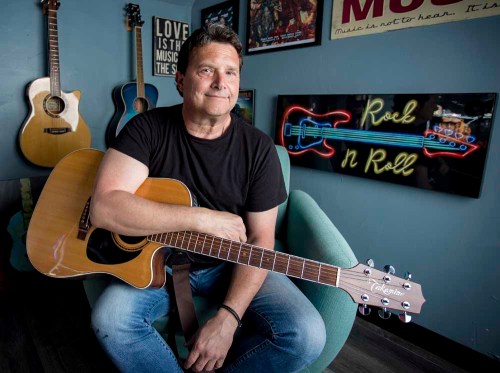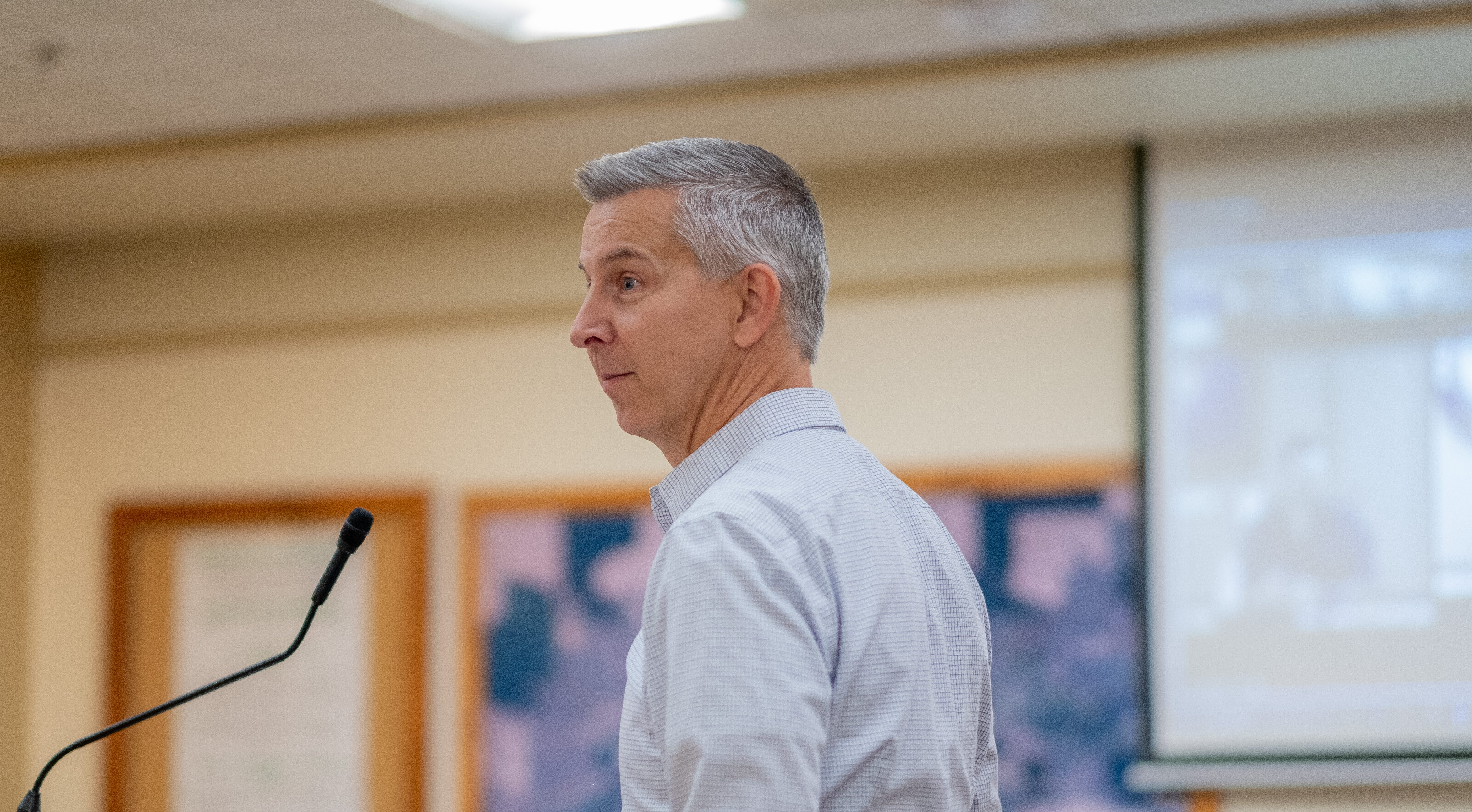Shooting survivor finds peace
Published 5:00 am Tuesday, April 21, 2020

- Kevin Anderson poses for a portrait with his guitar in the basement of his Pendleton home on Monday afternoon. Anderson, a survivor of the Route 91 Harvest country music festival shooting in Las Vegas two-and-a-half years ago, continues to use music to help unpack his feelings and cope with the traumatic event.
PENDLETON — Kevin Anderson knows trauma.
The Pendleton man worked as a first responder for 30 years and was in Las Vegas two-and-a-half years ago when a gunman opened fire on music fans at the Route 91 Harvest country music festival. In an instant, Anderson and his wife, Elaine, went from happily listening to country singer Jason Aldean to diving for cover.
Trending
The barrage of gunfire killed 58 people and wounded hundreds. SWAT officers swarmed the nearby Mandalay Bay Resort and Casino and found the shooter, Stephen Craig Paddock, 64, dead in his 32nd-floor hotel room with a cache of rifles and ammunition.
“We heard what sounded like fireworks,” said Elaine, a senior mortgage loan officer at the Guild Mortgage Company in Pendleton. “Everyone started dropping.”
Elaine and Kevin tended to off-duty California police officer Michael Gracia, who was shot in the head, and his fiancé, Summer Clyburn, who had a bullet in her back. Kevin got Gracia to a car and Elaine helped Clyburn into an ambulance. Kevin returned multiple times to help others.
Since the concert, Kevin has struggled. He tried therapy, but had trouble opening up. He felt anxious.
“It keeps you hypervigilant,” he said. “I was constantly surveilling. I felt terrified going to the mall or the movie theater.”
Six months ago, he retired as an emergency medical technician and regional communications director for American Medical Response, a medical transportation company.
Trending
On a Route 91 survivors Facebook site, Elaine learned about a free, weeklong therapeutic workshop bringing together survivors of mass shootings, including Columbine, Marjory Stoneman Douglas, the Aurora movie theater and the Antioch Waffle House. She suggested to Kevin that he might want to look into it. He applied along with hundreds of others, doing phone interviews with representatives of the Onsite Foundation that was organizing the gathering at a campus outside Nashville.
“When they chose me to attend, I was feeling a little blessed, but also was thinking they must think I’m really messed up,” he said, with a laugh.
In March, he traveled to Nashville where he found a stately manor surrounded by cabins on a large estate and numerous “world-class trauma-informed counselors.” Anderson and the 39 other survivors from seven different mass shootings turned in their phones and got to work.
“There was no outside contact allowed,” he said. “The purpose was to get immersed into therapy.”
They split into small groups and told their stories. They mastered breathing and mindfulness techniques and talked about what trauma does to the brain. Anderson learned that trauma accumulates. He had seen plenty in his EMS career. His high school sweetheart died in his arms in 2011 of pancreatic cancer at age 49. Then came the shooting. It was a lot. Anderson learned that all this trauma amassed in his brain’s fear center, the amygdala.
“You learn to move trauma to the (prefrontal cortex) where you can digest it,” said Crystal Miller, a member of the foundation’s survivor advisory council and a survivor of the shooting at Columbine High School 21 years ago. One morning at the conference, Miller told Anderson her story over coffee. Miller has shared the story many times, she said, and it never feels rote.
Miller, then 16, was studying in the library with two friends when she heard a popping noise. As the sound got louder, they dove under the table. Gunmen and fellow students Eric Harris and Dylan Klebold entered the library and started killing.
“They ended up by our table,” Miller said. “Their boots were inches away.”
When the boys left to reload, she and her friends escaped the library, where 10 students died that day. The speaker and author now lives in Morrison, Colorado, with her husband and three children.
Both Anderson and Miller said being around others with similar experiences helps.
“We offload pain and help share each other’s burdens,” Miller said. “There is magic that happens when we are together. We hold those scars so tenderly.”
“They call it ‘brutiful,’” Anderson said. “It was brutal and beautiful at the same time.”
In the weeks after the conference, he said he feels calmer. Elaine has noticed too.
“It was good for him,” she said. “He is happier and more at peace.”
The conference was the brainchild of Laura Hutfless, who organized the conference to honor her boyfriend and Columbine survivor Austin Eubanks. His death in 2019 came after a lengthy addiction to opioids sparked by the trauma of the shooting.
“My goal is to give people hope and tools for healing,” said Hutfless, who lives in Nashville and works in the music industry.
Planning happened on the advice of Miller and other survivors on the advisory council that was assembled to plan the inaugural event. Hutfless knew from her experience with Austin that survivors trust survivors and they need different therapies as time goes on. Much later, after the initial aftermath, feelings surface unbidden.
“The anger they feel comes from something really deep,” she said. “It’s an emotion that needs to be unpacked.”
Anderson said he did a fair amount of unpacking at the workshop. Now at home, he is a work in progress.
Music continues to be a balm. In a basement room adorned with concert posters, he loves to pluck a guitar from his collection, settle into a chair and play. On the wall is a Route 91 poster featuring Jason Aldean looking out with clear blue eyes. Hanging nearby is a photo of him and Elaine at the concert and Anderson’s wrist band from the weekend, one he thought he’d lost, but hadn’t. These reminders of that traumatic day are part of his story now, a story Anderson will continue to process.
In October, he, Elaine, and his sister and brother-in-law plan to go to Vegas to see Luke Combs. He will periodically video chat with other survivors he met at the conference.
“I hadn’t realized how important it is to be connected to a group,” he said. “You don’t recover alone.”









